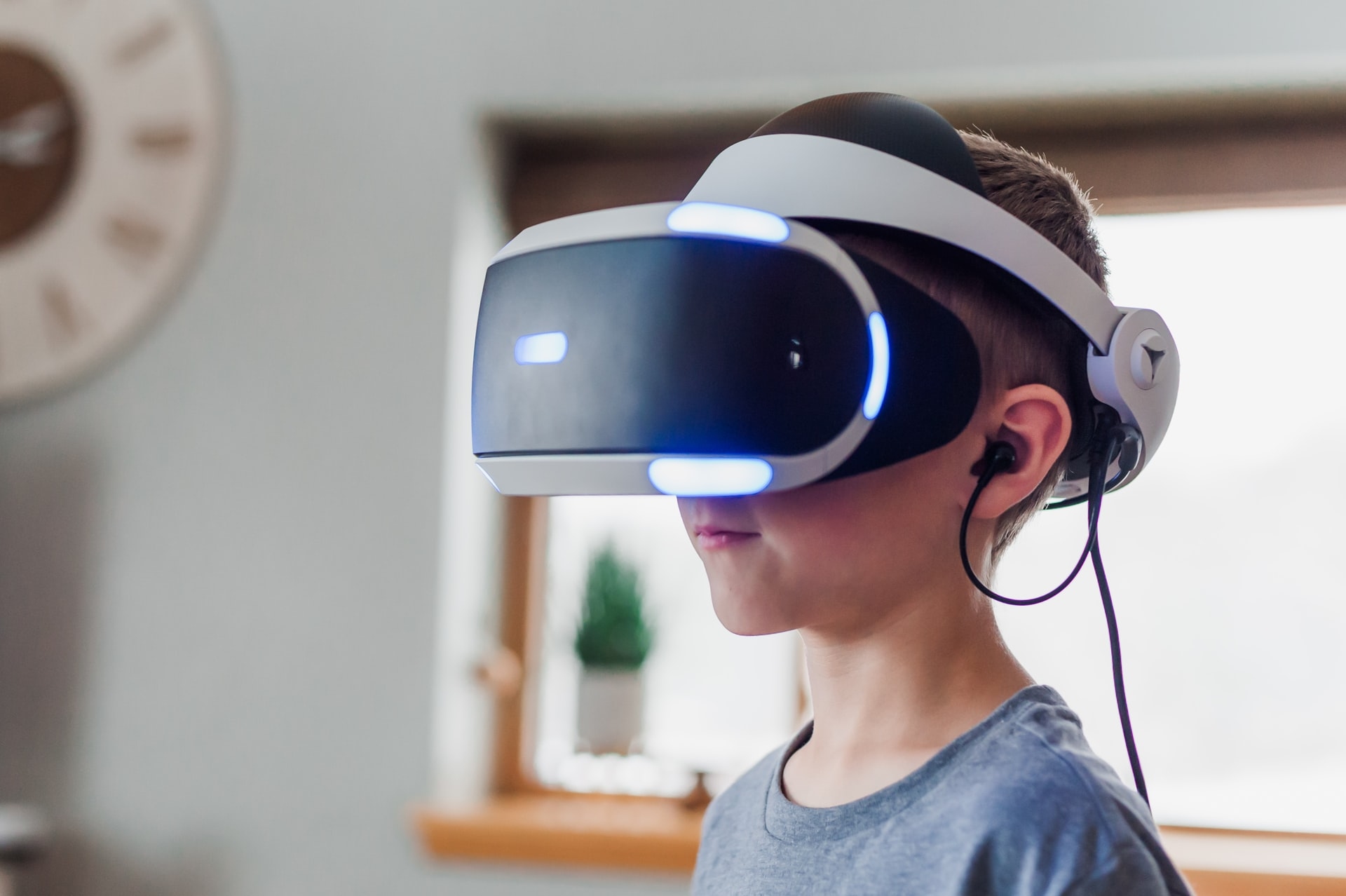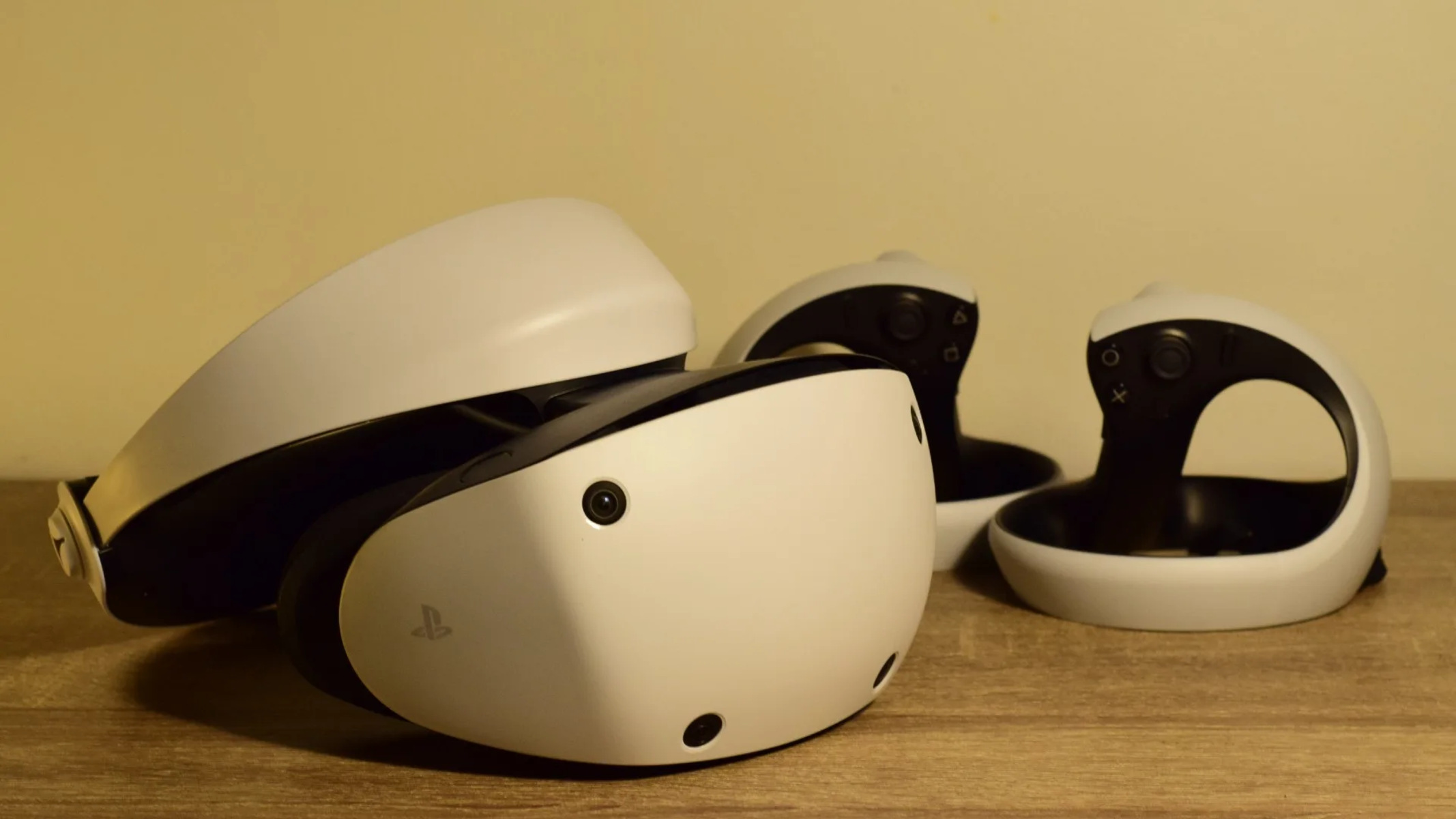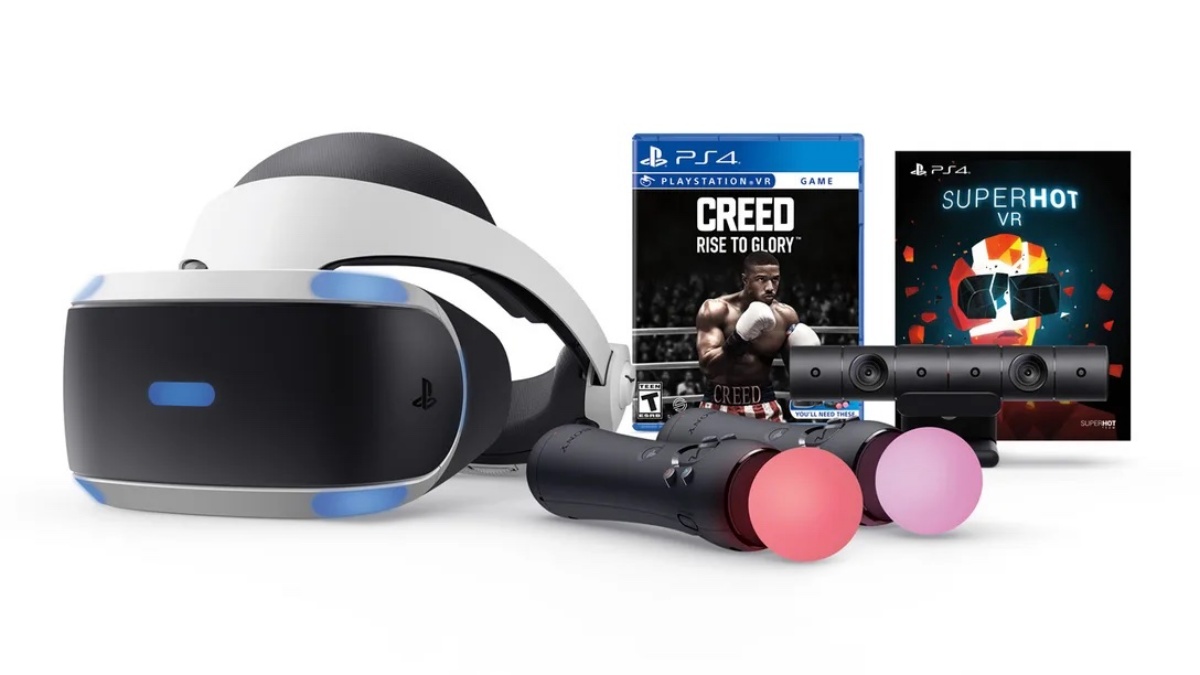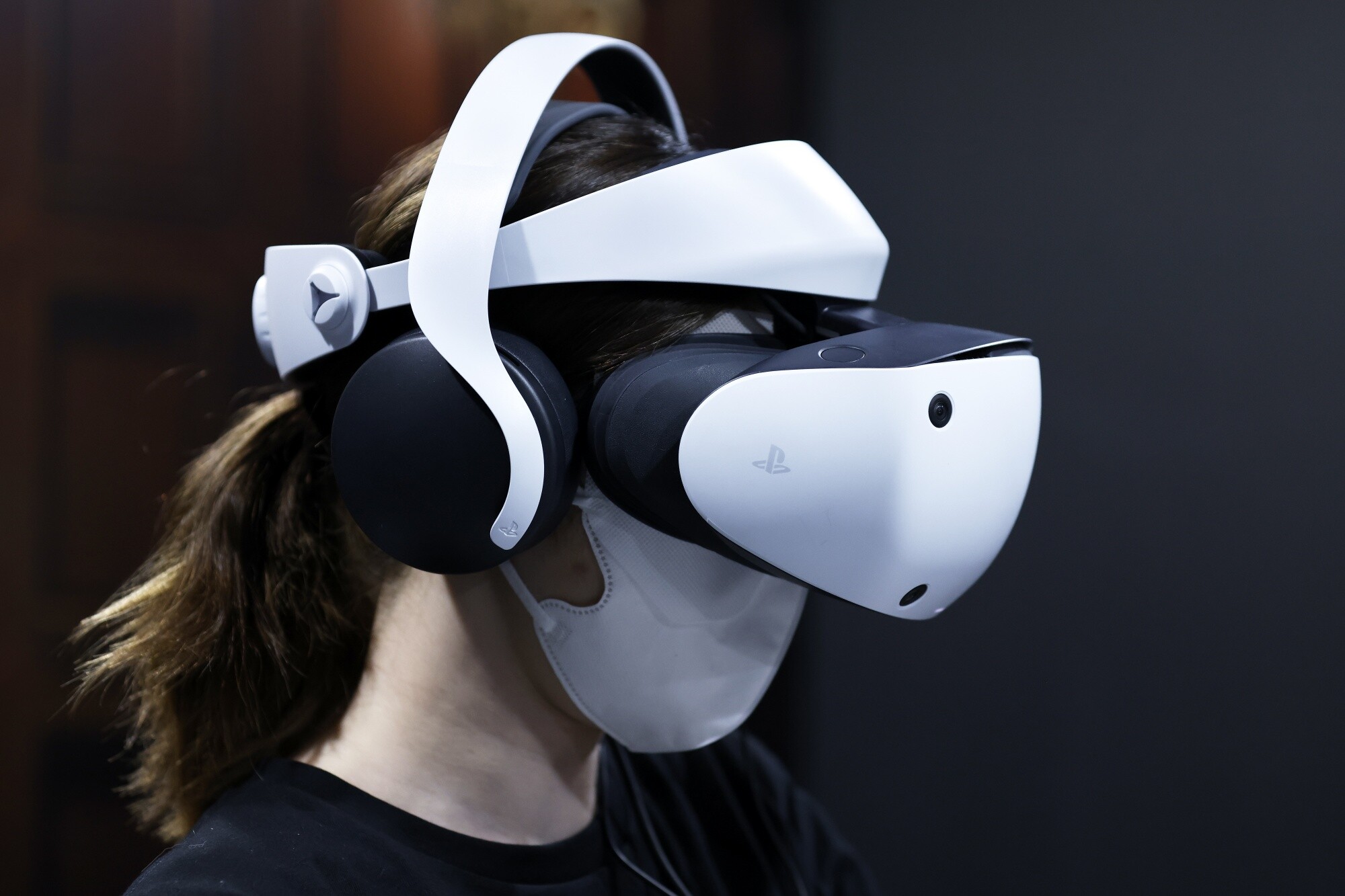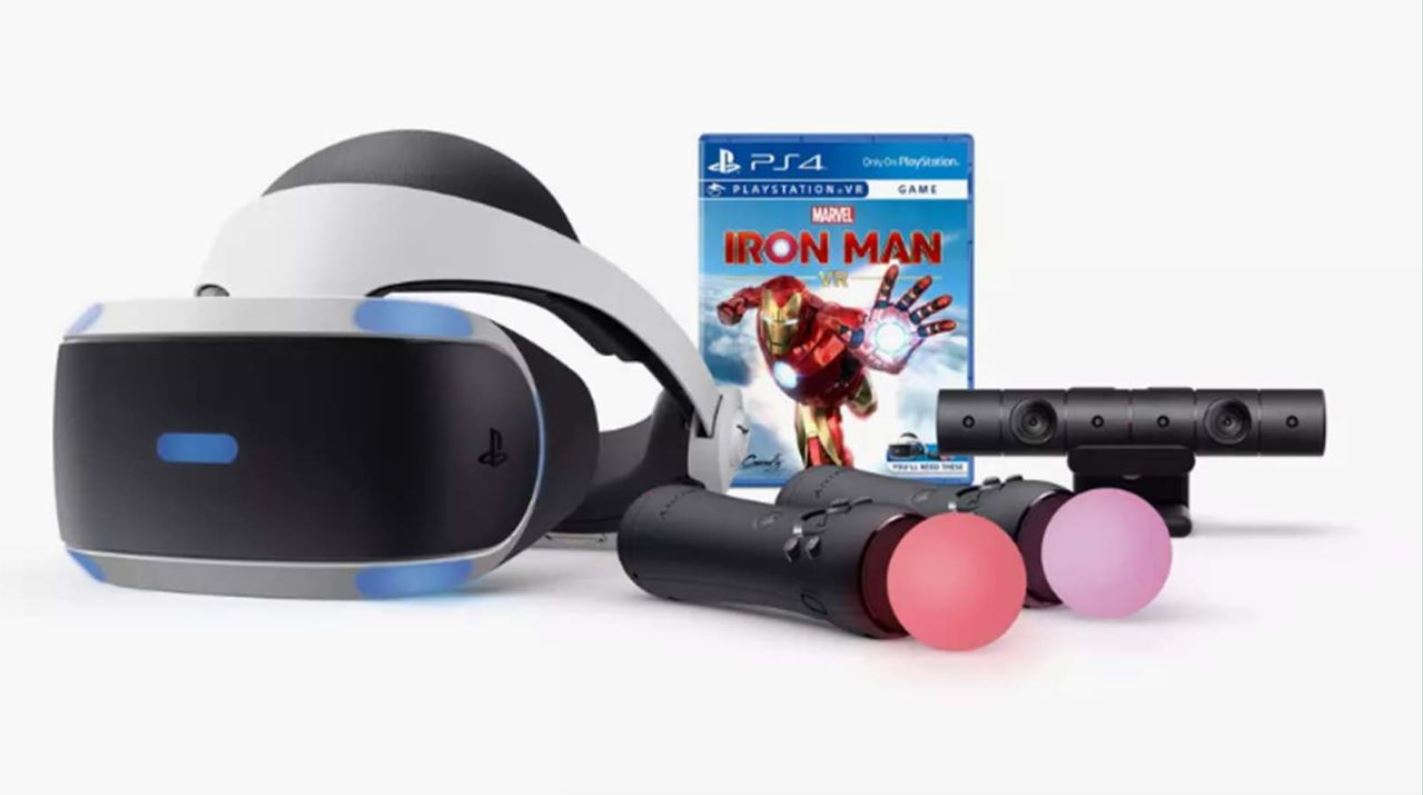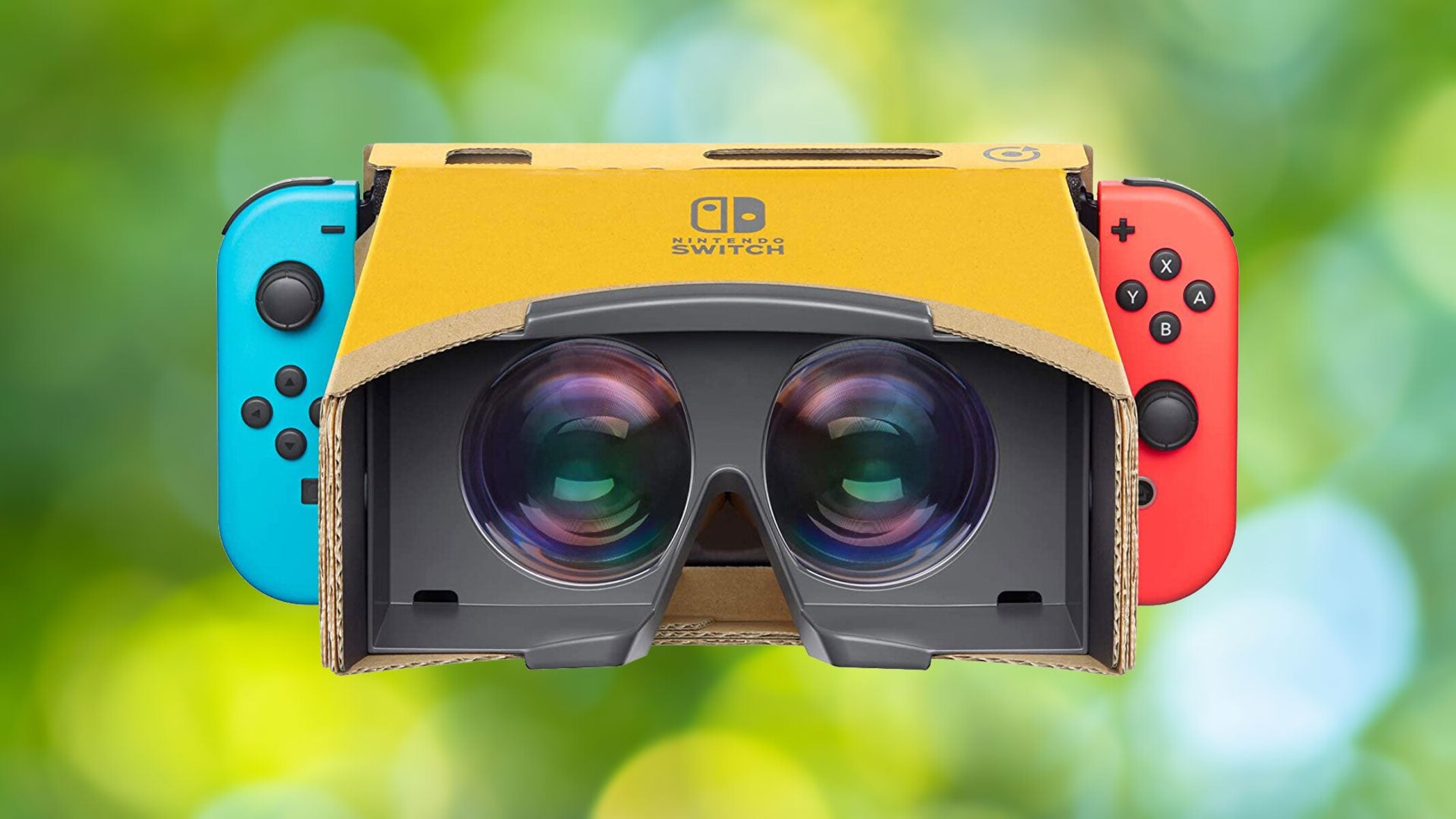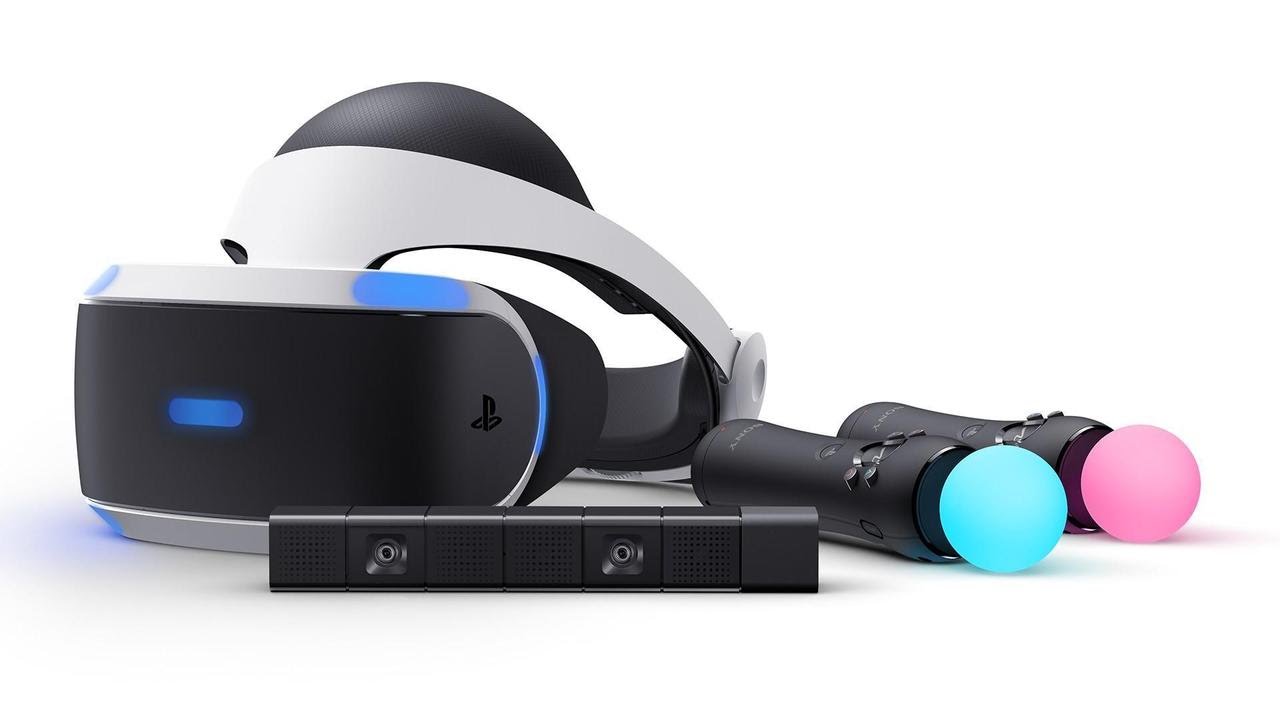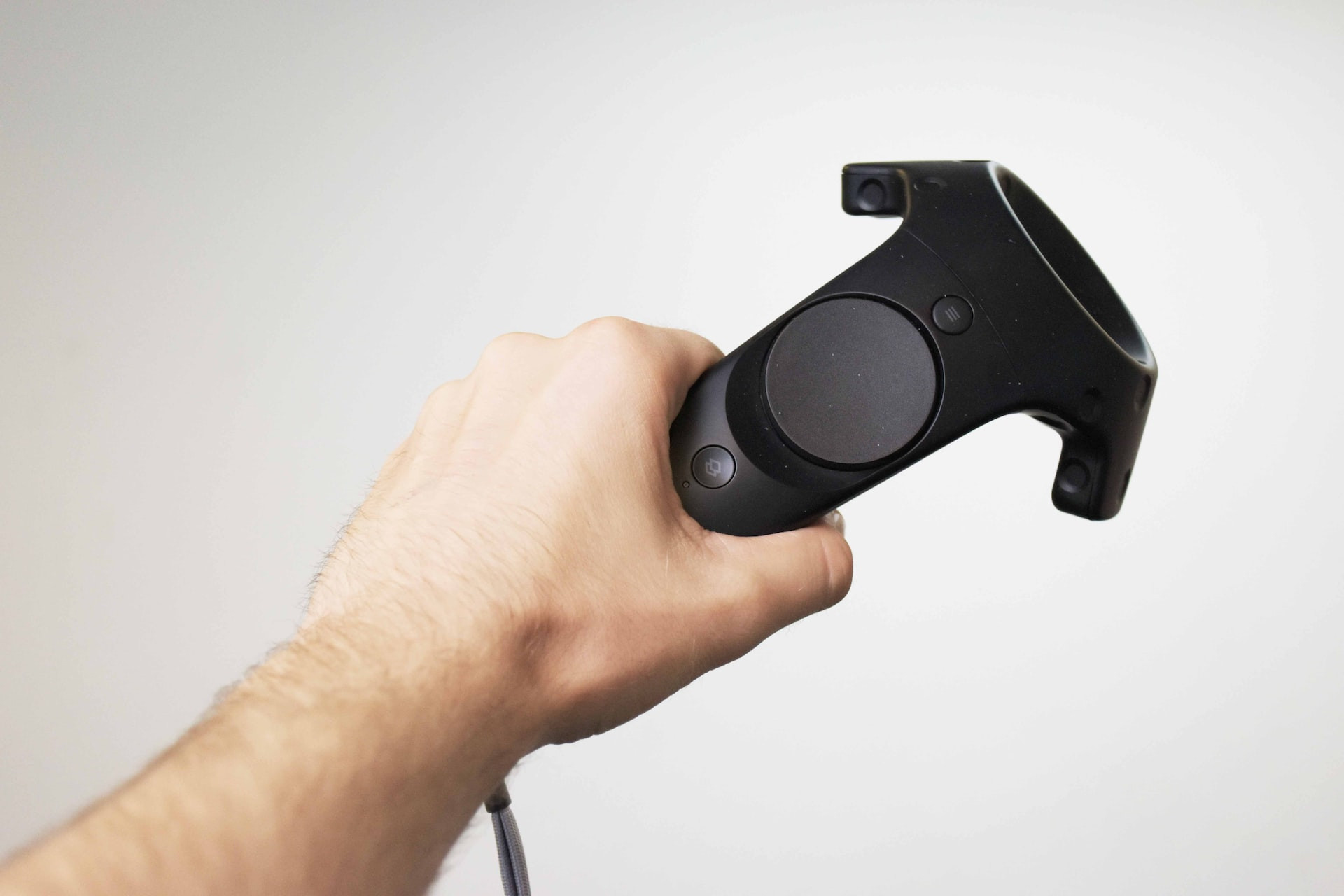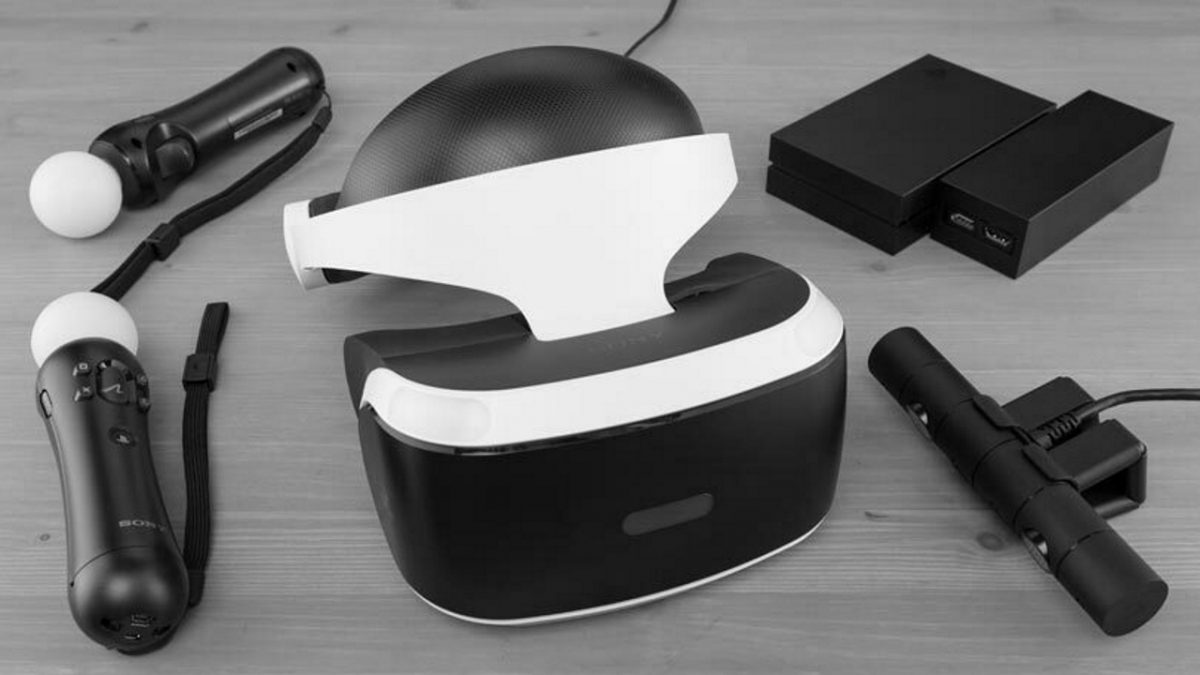Introduction
Welcome to the immersive world of virtual reality gaming! With the advancement of technology, gaming has taken a leap forward, allowing players to step into virtual worlds and experience games like never before. Virtual reality (VR) headsets have revolutionized the gaming industry, providing a truly immersive and interactive experience that transports players into a virtual realm.
A VR headset is a wearable device that combines a high-resolution display, motion tracking sensors, and audio capabilities to create a realistic virtual environment. By wearing a VR headset, players can explore virtual worlds, interact with objects, and engage in heart-pumping gaming experiences.
There are several types of VR headsets available in the market, each offering unique features and specifications. From standalone headsets that don’t require a gaming console or a powerful computer, to PC-connected headsets that offer unparalleled graphics and performance, there’s a VR headset for every gaming enthusiast.
Getting started with VR gaming may seem daunting, but it’s easier than you think! In this article, we will guide you through the process of setting up your VR headset, installing VR games, and provide some tips and strategies to enhance your VR gaming experience. We will also discuss safety precautions and highlight the advancements and future of VR gaming.
So, grab your VR headset, put it on, and let’s dive into the captivating world of virtual reality gaming!
What is a VR Headset?
A VR headset, short for Virtual Reality headset, is a cutting-edge device that offers users an immersive and realistic gaming experience. It is a wearable device that wraps around the user’s head, covering their eyes and ears, and transports them to a virtual world. Through a combination of high-resolution displays, motion tracking sensors, and audio technology, VR headsets create a fully immersive environment that mimics real-world experiences.
The main component of a VR headset is the display. Typically, VR headsets have two high-resolution screens, one for each eye, that provide a stereoscopic 3D view. This creates the illusion of depth and enhances the feeling of being present in the virtual environment. The displays have a high refresh rate to reduce motion sickness and blur, ensuring smooth visuals while the user is interacting with the virtual world.
In addition to the display, VR headsets come equipped with motion tracking sensors. These sensors detect the user’s head movements in real-time, allowing them to look around and explore the virtual environment naturally. Whether it’s turning your head to look behind an object or leaning in to examine a virtual object up close, the motion tracking sensors ensure that the virtual world responds to your movements, providing a more immersive experience.
Another crucial element of VR headsets is audio technology. Most VR headsets feature built-in headphones or offer audio connectivity, allowing players to hear in-game sounds with spatial accuracy. This means that sounds are perceived as coming from specific directions, adding to the immersive nature of the experience. The combination of realistic visuals and spatial audio creates an incredibly lifelike gaming experience in virtual reality.
VR headsets can be tethered or standalone. Tethered headsets require connection to a gaming console or a powerful computer to function. These headsets offer superior graphics and performance as they rely on the processing power of the connected device. On the other hand, standalone headsets have all the necessary components embedded in the device itself, eliminating the need for external hardware. While standalone headsets may have slightly lower specifications, they offer the advantage of portability and ease of use.
Overall, VR headsets open up a whole new world of gaming possibilities. They provide an immersive and interactive experience that transports players to virtual realms, offering endless adventures, challenges, and opportunities for exploration. So, put on your VR headset and get ready to embark on a thrilling virtual journey!
Types of VR Headsets
There are several types of VR headsets available in the market, each offering unique features, specifications, and price ranges. Understanding the different types can help you choose the one that best suits your gaming needs and budget. Let’s take a closer look at the main types of VR headsets:
- Tethered VR Headsets: Tethered VR headsets require a connection to a gaming console or a powerful PC to operate. These headsets offer high-quality graphics, immersive experiences, and precise tracking. They are typically equipped with external sensors or cameras that track the user’s movements, providing a more interactive and realistic virtual experience. Some popular examples of tethered VR headsets include the Oculus Rift, HTC Vive, and PlayStation VR.
- Standalone VR Headsets: Standalone VR headsets have all the necessary components, including the display and processing power, built directly into the headset. They do not require external hardware or a connection to a gaming console or PC. Standalone headsets offer convenience and portability, making them a popular choice for casual gamers and those on the go. The Oculus Quest and the HTC Vive Focus are notable examples of standalone VR headsets.
- Mobile VR Headsets: Mobile VR headsets, such as the Samsung Gear VR and Google Cardboard, rely on a user’s smartphone to provide the display and processing power. These headsets are budget-friendly options that offer a basic virtual reality experience. Simply insert your smartphone into the headset, launch a compatible VR app, and you’re ready to explore the virtual world. While mobile VR headsets may not offer the same level of immersion as tethered or standalone headsets, they provide a cost-effective entry point to VR gaming.
It’s important to note that the type of VR headset you choose may depend on factors such as your budget, gaming preferences, and the level of immersion you desire. Tethered VR headsets are ideal for serious gamers who prioritize high-quality graphics and advanced tracking capabilities. Standalone headsets offer a convenient and portable VR experience, while mobile VR headsets are a budget-friendly option for casual gamers.
As technology continues to advance, we can expect to see more innovative VR headsets hitting the market, offering improved graphics, enhanced tracking, and even more immersive experiences. Whether you’re a hardcore gamer or a casual enthusiast, there’s a VR headset out there that will take your gaming adventures to the next level.
Getting Started with VR Gaming
Embarking on your virtual reality gaming journey is an exciting prospect. Getting started with VR gaming involves a few essential steps to ensure you have the best experience possible. Let’s explore the process of getting started with VR gaming:
- Choosing the Right VR Headset: The first step is to choose the VR headset that suits your needs and budget. Consider factors such as the type of headset (tethered, standalone, or mobile), the available games and apps, and the overall user experience. Research different models, read reviews, and compare specifications to make an informed decision.
- Checking System Requirements: If you opt for a tethered VR headset, check the system requirements to ensure your gaming console or PC meets the necessary specifications. Tethered headsets often require a powerful computer with a dedicated graphics card to deliver smooth gameplay and optimal performance.
- Setting Up Your Play Area: Creating a dedicated play area is essential for a safe and enjoyable VR gaming experience. Clear out any obstacles, ensure there’s enough space to move around, and consider using a play mat or marking the boundaries of your play area. This will prevent collisions and provide a safe environment for immersive gameplay.
- Calibrating and Adjusting your VR Headset: Before diving into a game, take the time to properly calibrate and adjust your VR headset. Follow the manufacturer’s instructions to ensure the headset fits comfortably and securely on your head. Adjust the straps, tighten or loosen accordingly, and position the display at eye level for the best visual experience.
- Installing VR Games and Apps: Once your VR headset is set up, it’s time to install some VR games and apps. Depending on the type of VR headset you have, you may need to access an online store or marketplace specifically for VR content. Browse through the available games, read reviews, and consider your gaming preferences to select the ones that interest you the most.
- Exploring VR Gaming Techniques: VR gaming introduces new ways of interacting with virtual environments. Familiarize yourself with the various techniques, such as using motion controllers or hand gestures, to navigate and interact with the games. Each game may have its own unique gameplay mechanics, so take the time to understand the controls and experiment with different techniques.
By following these steps, you’ll be well on your way to enjoying the immersive world of VR gaming. Remember to take breaks and pace yourself to avoid fatigue or motion sickness. With practice and experience, you’ll become more comfortable and skilled in the virtual world, opening the door to a whole new realm of gaming possibilities.
Setting Up Your VR Headset
Setting up your VR headset is a crucial step to ensure a smooth and enjoyable gaming experience. Each VR headset may have its own specific setup process, but there are some general steps that apply to most devices. Let’s explore how to set up your VR headset:
- Unboxing and Familiarizing Yourself: Start by unboxing your VR headset and familiarizing yourself with its components. Take a look at the headset itself, the motion controllers (if applicable), any cables or adapters, and the user manual. This will give you an idea of what you’ll be working with during the setup process.
- Connecting Cables and Powering On: Most VR headsets require connections to your gaming console, PC, or a power source. Follow the manufacturer’s instructions to connect the necessary cables. This may include an HDMI or DisplayPort cable, USB cables, or power adapters. Once all the connections are in place, power on your VR headset.
- Adjusting Straps and Fit: Put on your VR headset and adjust the straps to ensure a comfortable and secure fit. The headset should rest snugly on your head without causing any discomfort or pressure points. Adjust the head straps and tightness as needed to find the perfect fit.
- Positioning the Displays: Position the displays of your VR headset at eye level. The goal is to have a clear and focused view when looking through the lenses. Use any adjustment mechanisms provided by the headset to align the displays properly.
- Calibrating and Configuring: Most VR headsets require calibration and configuration to optimize their performance. Follow the on-screen prompts or instructions provided by the manufacturer to calibrate the headset and motion controllers. This may involve performing certain movements, such as looking in different directions or waving the motion controllers in specific patterns.
- Setting Up Tracking Sensors: If your VR headset relies on external sensors for tracking, position them according to the manufacturer’s instructions. Usually, they need to be placed in specific locations to ensure accurate tracking. Ensure that there is a clear line of sight between the sensors and the headset.
- Testing and Troubleshooting: Before diving into your first VR gaming session, it’s essential to test and troubleshoot any potential issues. Ensure that the displays are crisp and aligned properly, that the motion controllers are responsive, and that the tracking is accurate. If you encounter any technical difficulties, refer to the user manual or contact customer support for assistance.
By following these steps, you’ll have your VR headset set up and ready to transport you to virtual worlds. Remember to refer to the specific instructions provided by the manufacturer to ensure a successful setup process. Each VR headset may have additional features or setup requirements, so always consult the user manual for detailed information. Now that your VR headset is set up, it’s time to start installing and playing some amazing VR games!
Installing VR Games
Once your VR headset is set up and ready to go, it’s time to install some thrilling VR games to dive into the immersive world of virtual reality. The process of installing VR games may vary depending on the type of VR headset you have, but the general steps remain relatively similar. Here’s how you can install VR games:
- Accessing the VR Store: Start by accessing the dedicated VR store or marketplace for your specific VR headset. This could be an online platform or an app on your gaming console, PC, or standalone headset. Examples include the Oculus Store, SteamVR, or the PlayStation Store. Locate and open the VR store on your device.
- Browsing Available Games: Explore the collection of VR games available in the store. Use the search function, browse categories, or check out recommended titles to discover exciting options. Take your time to read descriptions, watch trailers, and read reviews to get an idea of what each game offers.
- Purchasing or Downloading Free Games: Once you’ve found a game you’re interested in, you can either purchase it or download a free game. Follow the prompts and instructions in the store to complete the transaction. If the game is free, simply click the download button to initiate the installation process.
- Downloading and Installing: After purchasing or selecting a free VR game, the download and installation process will begin. Depending on the size of the game and your internet connection, this process may take some time. Make sure your VR headset is connected to a stable internet connection throughout the download and installation process.
- Launch and Configuration: Once the game is installed, you can usually find it in your VR headset’s library or app list. Launch the game to start the adventure! Some games may require additional configuration settings, such as graphics options, control settings, or movement preferences. Take the time to adjust these settings according to your preferences.
- Updating Games: It’s important to keep your VR games up to date to ensure the best performance and access to new features or bug fixes. Check for updates regularly in the VR store and install any available updates to keep your games running smoothly.
Installing VR games is an exciting part of the VR gaming experience. With a vast array of games available for different genres and preferences, there’s something for everyone. Remember to allocate sufficient storage space on your VR headset or connected device to accommodate the games you want to install. Clear out unnecessary files or uninstall games you no longer play to make room for new adventures.
Now that you have a game or two installed, put on your VR headset and immerse yourself in the thrilling worlds and captivating gameplay that virtual reality gaming has to offer!
Popular VR Games to Play
Virtual reality gaming offers a vast range of immersive and thrilling experiences across various genres. Whether you’re a fan of action-packed adventures, mind-bending puzzles, or heart-stopping horror, there’s a VR game out there to suit your tastes. Here are some popular VR games that are worth exploring:
- “Beat Saber”: This rhythmic music game combines lightsaber-like sabers and fast-paced beats to create an exhilarating experience. Players must slash through the beats flying towards them in time with the music, resulting in a visually stunning and adrenaline-pumping gameplay. It’s a fantastic game for both VR newcomers and seasoned players.
- “Superhot VR”: Putting a unique spin on the first-person shooter genre, “Superhot VR” offers a mind-bending experience. Time only moves when you move, requiring strategic planning and precise movements to overcome enemies and dodge bullets. With its minimalist art style and intense gameplay, “Superhot VR” is a must-play for fans of action and puzzle-solving.
- “Moss”: “Moss” takes players on a charming and magical adventure from a third-person perspective. You play as a helpful spirit guiding a tiny mouse protagonist named Quill through a beautifully crafted world filled with puzzles, combat, and exploration. “Moss” offers a unique blend of platforming and puzzle-solving, making it a standout in the VR gaming landscape.
- “Resident Evil 7: Biohazard VR”: For those seeking a spine-chilling horror experience, “Resident Evil 7: Biohazard VR” delivers. With its intense atmosphere, twisted storyline, and immersive gameplay, this game plunges players into a terrifying world filled with puzzles, deadly enemies, and gruesome encounters. It’s an unforgettable VR horror survival experience.
- “Half-Life: Alyx”: Developed by Valve Corporation, “Half-Life: Alyx” marks the return of the beloved Half-Life series in VR. Set between the events of Half-Life and Half-Life 2, players step into the shoes of Alyx Vance as she fights to liberate her city from an alien occupation. This game pushes the boundaries of VR with its immersive gameplay, captivating storyline, and stunning visuals.
These are just a few examples of the popular VR games available today. There are countless other titles across various genres, including sports, racing, puzzle, and exploration games, each offering its own unique and immersive gameplay experiences.
When choosing VR games to play, consider your personal preferences, your VR headset’s compatibility, and the level of immersion you desire. Read reviews, watch gameplay videos, and explore the VR game libraries to discover hidden gems and exciting new experiences.
So, put on your VR headset, grab your motion controllers, and get ready to embark on unforgettable adventures in the immersive worlds of these popular VR games!
Tips and Strategies for Playing VR Games
Playing VR games can be an incredibly immersive and thrilling experience. To make the most of your virtual reality adventures, here are some tips and strategies to enhance your gameplay:
- Clear Your Play Area: Ensure you have enough space to move around freely without obstacles. Clear the play area of any furniture or objects that could get in your way to avoid collisions or accidents while playing.
- Take Breaks: VR gaming can be immersive but also physically and mentally demanding. Take regular breaks to rest your eyes and prevent motion sickness or fatigue. Listen to your body and pause the game if you start feeling discomfort.
- Experiment with Different Movement Options: VR games offer various movement options, from teleportation to smooth locomotion. Experiment with these options to find what works best for you. Some players may experience motion sickness with certain movements, so adjust the settings accordingly.
- Ensure Proper Lighting: Adequate lighting in your play area can improve tracking accuracy. Ensure there’s enough light in the room, but avoid direct sunlight or bright lights that can interfere with the sensors on your VR headset.
- Get Comfortable: Take the time to adjust the fit and comfort of your VR headset. Loosen or tighten the straps to find the right fit. Additionally, consider using headphones or earbuds that provide a comfortable audio experience during gameplay.
- Stay Hydrated: Playing VR games can be physically engaging, leading to increased perspiration. Stay hydrated by having a bottle of water nearby. Take regular sips during breaks to keep yourself hydrated and refreshed.
- Follow Game Instructions: Pay attention to in-game tutorials and instructions. VR games may have specific mechanics or techniques unique to the virtual reality environment. Understanding the game’s controls and mechanics will enhance your gameplay experience.
- Engage with the Virtual Environment: Interact with the virtual world around you. Take advantage of the motion controllers or hand gestures to interact with objects, solve puzzles, and explore the environment fully. Immerse yourself in the virtual world and allow yourself to be part of the experience.
- Play in a Comfortable Environment: Choose a quiet and distraction-free space to play VR games. Minimize external noise and interruptions to maximize immersion and focus on the game. Consider using headphones to further enhance your audio experience.
- Use Chaperone Systems: Most VR headsets have a chaperone system that creates virtual boundaries or alerts when you get too close to the real-world boundaries. Take advantage of this feature to prevent collisions with walls, furniture, or other objects in your play area.
By following these tips and strategies, you can enhance your VR gaming experience and ensure a safe and enjoyable time in the virtual world. Remember, each game may have its own unique requirements or settings, so adjust and adapt as needed for each specific title. Get ready to immerse yourself in the exciting and captivating world of VR gaming!
Safety Precautions for VR Gaming
While VR gaming can provide immersive and thrilling experiences, it is important to prioritize safety. Here are some safety precautions to keep in mind to ensure a safe and enjoyable VR gaming session:
- Take Regular Breaks: VR gaming can be physically and mentally engaging. Take breaks every 30 minutes to an hour to rest your eyes, stretch your body, and prevent discomfort or fatigue.
- Ensure a Clear Play Area: Clear the play area of any furniture, objects, pets, or other obstacles. Create a safe space where you can move freely without the risk of collisions or accidents.
- Secure Loose Cables: Make sure that all cables, including headset cables and power cords, are properly secured or tucked away. This will minimize the risk of tripping or getting tangled in cables during gameplay.
- Check for Tripping Hazards: Be aware of any tripping hazards in your play area, such as rugs, loose cords, or elevated surfaces. Secure or remove these hazards to prevent accidents or injuries.
- Set Boundaries: Set physical boundaries within your play area to ensure that you do not unintentionally step outside the safe zone. Utilize the chaperone system, if available, to provide visual cues or alerts when you come close to real-world boundaries.
- Manage Motion Sickness: Some individuals may experience motion sickness or discomfort while playing VR games. To manage motion sickness, start with games that have static or gradual movement, take breaks when feeling unwell, and gradually increase exposure to more intense experiences.
- Adjust Headset Fit: Properly adjust the fit of your VR headset to ensure comfort and stability during gameplay. A loose or improperly fitted headset may affect immersion and may lead to discomfort or difficulty in maintaining focus.
- Stay Hydrated: Playing VR games can be physically engaging and cause perspiration. Stay hydrated by having a bottle of water nearby to prevent dehydration during longer gaming sessions.
- Follow Age Restrictions: Respect age restrictions and guidelines set by the VR headset manufacturer and game developers. Some VR experiences may not be suitable for young children due to potential health and safety considerations.
- Monitor Eye Fatigue: Pay attention to any signs of eye strain or discomfort. If you experience eye fatigue, blurriness, headaches, or other visual issues, take a break and consult a healthcare professional if necessary.
Remember, safety should always be a priority when engaging in VR gaming. By being mindful of these safety precautions, you can ensure a fun and injury-free experience while exploring the immersive virtual worlds of VR gaming.
Advancements and Future of VR Gaming
Virtual reality (VR) gaming has come a long way since its inception, and there are exciting advancements on the horizon that will shape its future. As technology continues to evolve, here are some key advancements and trends to look out for in the world of VR gaming:
- Improved Graphics and Visuals: As processing power increases, we can expect VR games to feature even more stunning and realistic graphics. Higher resolution displays, improved texture details, and enhanced visual effects will further immerse players into the virtual worlds.
- Enhanced Haptic Feedback: Haptic feedback technology is continually improving. Future VR games may offer more precise and immersive tactile sensations, allowing players to feel the virtual environment through vibrations, pressure, and even temperature changes.
- Wireless and Standalone Systems: Wireless and standalone VR headsets are becoming more prevalent. Removing the need for external wires or connections enhances convenience, mobility, and ease of use for players, making VR gaming more accessible to a wider audience.
- Augmented Reality Integration: The integration of augmented reality (AR) and VR technologies opens up exciting possibilities. Combining the real-world environment with virtual elements will enable immersive experiences that blend virtual and physical elements seamlessly in gaming.
- Social VR: Social experiences within VR are gaining popularity. From virtual meetups with friends to multiplayer VR games, players can connect and interact with each other in virtual spaces, creating a sense of presence and shared experiences.
- Artificial Intelligence and Virtual Characters: AI technology in VR gaming is advancing, resulting in more realistic and intelligent virtual characters. NPCs (non-playable characters) will exhibit improved behaviors, responsiveness, and interactions, enhancing the overall immersion and realism of VR gaming experiences.
- Expanded VR Content: The library of VR games and experiences is growing rapidly. Developers are creating a wider variety of genres and gameplay styles to cater to diverse gaming preferences. From action-packed adventures to educational simulations, VR gaming will offer something for everyone.
- Health and Fitness Applications: VR gaming is expanding beyond entertainment and entering the realm of health and fitness. VR fitness games and applications are emerging, providing engaging workout experiences that combine gaming and exercise, promoting physical activity and a healthy lifestyle.
- Accessibility and Inclusivity: Efforts are being made to make VR gaming more accessible and inclusive. This includes designing VR experiences for people with disabilities, improving user interfaces for easier navigation, and offering customizable options to accommodate different needs and preferences.
- Industry Collaboration and Innovation: The VR gaming industry is witnessing collaborations and partnerships between hardware manufacturers, game developers, and content creators. This collaboration drives innovation, resulting in more advanced technology, unique experiences, and greater adoption of VR gaming.
The future of VR gaming holds immense promise, with advancements focusing on enhancing immersion, expanding content, improving accessibility, and pushing technological boundaries. As more players embrace the immersive and interactive nature of VR gaming, we can anticipate an exciting future filled with innovative experiences that continue to redefine the way we play and engage with games.
Conclusion
Virtual reality (VR) gaming has brought a new level of immersion and interactivity to the world of gaming. Through the use of advanced technology and innovative designs, VR headsets have transported players into captivating virtual worlds, offering unforgettable gaming experiences. Whether you’re slashing through beats in “Beat Saber,” solving puzzles in “Moss,” or surviving terrifying encounters in “Resident Evil 7: Biohazard VR,” VR gaming offers a wide range of thrilling adventures for players of all preferences.
As we have explored in this article, VR gaming encompasses various types of headsets, each with its own unique features and capabilities. From tethered headsets that offer superior graphics and performance to standalone and mobile headsets that prioritize portability and ease of use, there is a VR headset to cater to every gamer’s needs.
Getting started with VR gaming involves setting up your headset, installing VR games, and familiarizing yourself with the virtual environment. Additionally, this article has provided tips and strategies for enhancing your VR gaming experience, as well as safety precautions to ensure your well-being while immersed in virtual worlds.
Looking ahead, the future of VR gaming is filled with exciting possibilities. Advancements such as improved graphics, enhanced haptic feedback, wireless systems, augmented reality integration, and expanded VR content will continue to shape the industry. The collaboration and innovation among hardware manufacturers, game developers, and content creators will push the boundaries of what is possible in VR gaming.
Ultimately, VR gaming offers a unique and immersive way to play, pushing the boundaries of virtual experiences. Whether you’re exploring fantastical realms, solving intricate puzzles, or battling enemies in heart-racing adventures, VR gaming opens up a world of endless possibilities and rich storytelling.
So, put on your VR headset, strap in, and get ready to embark on thrilling virtual journeys that will transport you to new dimensions of gaming excitement!







